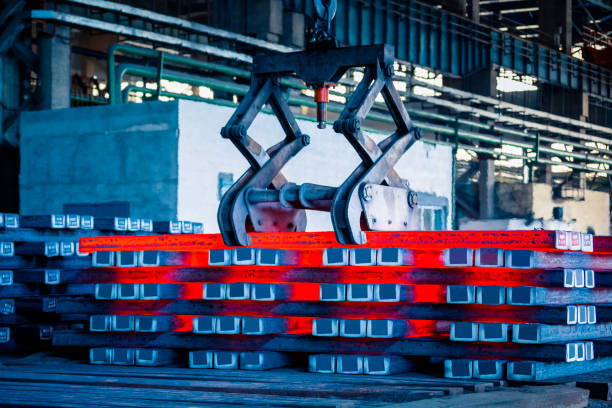New Era Of Steel Manufacturing And Market Dynamics

Q1. Could you start by giving us a brief overview of your professional background, particularly focusing on your expertise in the industry?
I earned a B.Sc. (Tech) in Ceramics in 1979 from Calcutta University, followed by an M.Tech in Operational Research & Business Management from NIT, Durgapur (formerly Regional Engineering College, Durgapur). I began my career with the Steel Authority of India Ltd (SAIL), a Central Government PSU, in 1980 as a Management Trainee (Technical) and retired in 2019 as the Chief General Manager of Durgapur Steel Plant, a unit of SAIL. My entire tenure was dedicated to serving as a Refractory Maintenance Engineer at an Integrated Steel Plant, where my responsibilities included organizing the relining, repairing, selection, and procurement of refractory materials, as well as monitoring refractory performance in various metallurgical ovens, furnaces, and vessels involved in the production, processing, and shaping of coke, iron, and steel. The Refractory Maintenance Department, where I worked, is a centralized maintenance department within an integrated steel plant.
Q2. What emerging trends in steelmaking (e.g. EAF, DRI) could alter refractory material demand in India?
As of now, the trend in an integrated Steel Plant is to follow the processes mentioned below:
- Coal to Coke in Tall Coke Ovens with Stamp Charging
- Big Volume Blast Furnaces with Coke and Sintered Iron Ore to get melting iron
- Conversion of Iron to Steel by BOF and a small in through EAF (mostly for Value added /Special Steel)
- Shaping of Steel through Continuous Casting route followed by Rolling Mills for different types of final Products by continuous/ intermittent method.
However, small/mini steel plants started production of iron ore using the DRI method and converted iron to steel using EAF. However, the problem in the EAF process is the high electrical power consumption.
Q3. How are major players like JSW Steel and Tata Steel responding to challenges such as cheap imports, and what strategic investments are they making to enhance competitiveness?
Both Tata Steel and JSW are on the path of maximizing their production capacity in their various units through brownfield projects of Steel plants/acquisition of small steel plants, including Rolling Mills, Special Steel plants, and Galvanising plants for developing the various finished products from raw materials.
JSW has installed/is going to be installed in the Pallet plants to utilize the blue dust of iron ore to make the iron-making process cost-effective and competitive. JSW group, including JSPCL & Jindal Stainless Steel, are more aggressive in this area of capacity enhancement.
Q4. What measures are being taken to boost domestic production of steelmaking raw materials, and how might these initiatives impact supply chains and cost structures?
Following the policy of ‘Make in India,’ most steel plants are taking refractory materials from indigenous sources, opting for joint ventures with coal mines abroad. Indian refractory manufacturers mainly bring raw materials from China and, to some extent, from other countries to minimize production costs. Most steel producers are installing pallet plants/beneficiation plants to utilize Indian Raw materials like Iron Ore, bauxite, Coal, magnesium, etc.
Q5. What are the latest developments in capacity expansion among key players, and how are these expected to influence market dynamics?
All big steel makers, both in PUS and the private sector, are on the path of capacity addition by Green Field/Brown Field Projects and the acquisition of small plants/finishing units.
Q6. How are leading refractory manufacturers in India differentiating themselves in terms of quality, technology, and pricing?
Indian refractory makers/producers are also expanding their production capacity to augment future demand by installing new plants and modernizing existing facilities like automatic input batch control /automatic press, online quality checking, etc. However, the basic problem is that major raw materials like magnesium must be imported mainly from China, Australia, and Turkey, affecting price and quality factors. To encounter this issue, the top producers in India, like RHI-India/TRLK/ Vesuvius India Ltd, etc, are on the path of extensive research to develop quality, high-value Products through their modern/well-equipped Research and Development Laboratories. Some medium players are going for a Joint Ventures path to build a sustainable process.
Q7. If you were an investor looking at companies within the space, what critical question would you pose to their senior management?
The following issues will be placed:
- Type of Refractory being made by the company and its consumption pattern
- Supply/availability of raw materials (Source/quality/Transportation)
- Availability of power supply/water supply and connectivity of plant with road/rail
- R&D/Laboratory facility.
Comments
No comments yet. Be the first to comment!
